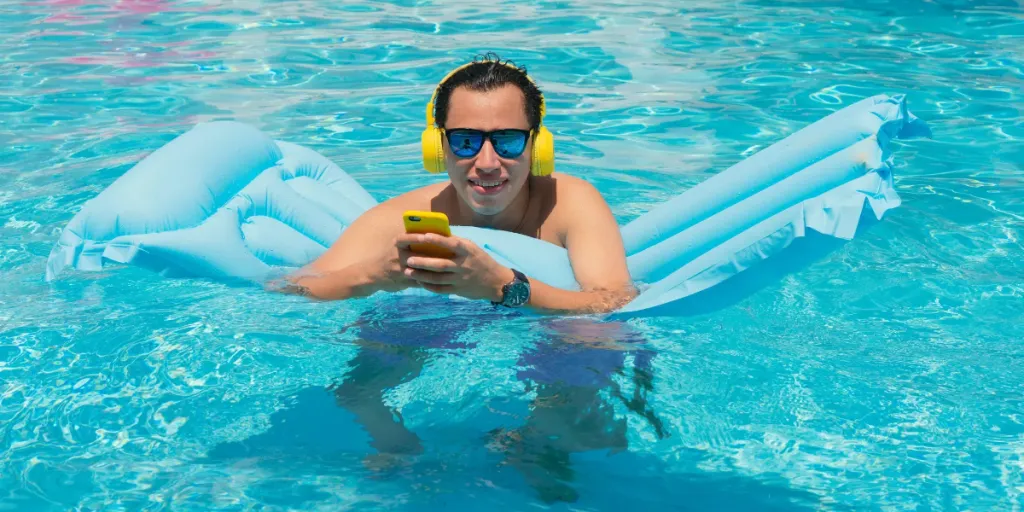Whether swimming for fitness or fun, headphones can make the experience better. For those who don’t love to swim but find it the best form of exercise for their bodies, headphones can make the experience tolerable. Listen to some pump-up music, favorite podcasts, or audiobooks while swimming with a pair of waterproof headphones. But what makes the best headphones for swimming?
Many headphones we use daily are considered water-resistant, but that does not mean they can be used underwater for swimming. Can they be used when sweating at the gym or out in the rain? Chances are yes, but they are not meant to be completely submerged in water. When looking for headphones for swimming, they must be waterproof.
Here, we’ll dive into the best headphones made for swimming, what makes them great (besides being waterproof), and why they’re worth investing in.
Table of Contents
What to look for in swimming headphones
What’s the difference between waterproof and water-resistant headphones?
Best swimming headphones
Tips for using headphones for swimming
FAQs
Final thoughts
What to look for in swimming headphones

When choosing the best headphones for swimming, consider the following factors:
- Waterproof rating: Look for a rating of IPX7 or higher. This ensures the headphones can handle submersion in water.
- Fit and comfort: Choose headphones with multiple ear tip sizes or an ergonomic design to ensure they stay in place during swimming.
- Sound quality: Ensure the headphones provide clear and balanced sound. Water can sometimes affect audio quality, so look for reviews that highlight sound performance.
- Durability: Check if the headphones are designed to withstand chlorine or saltwater. Durability is crucial for longevity.
- Compatibility: Ensure the headphones are compatible with the audio device. Some models come with built-in storage, while others require a connection to an external device with Bluetooth connectivity.
- Battery life: Long battery life is essential for uninterrupted listening. Look for swim headphones that offer at least 6 to 8 hours of playback time, ensuring they last through multiple swim sessions before needing a recharge.
What’s the difference between waterproof and water-resistant headphones?
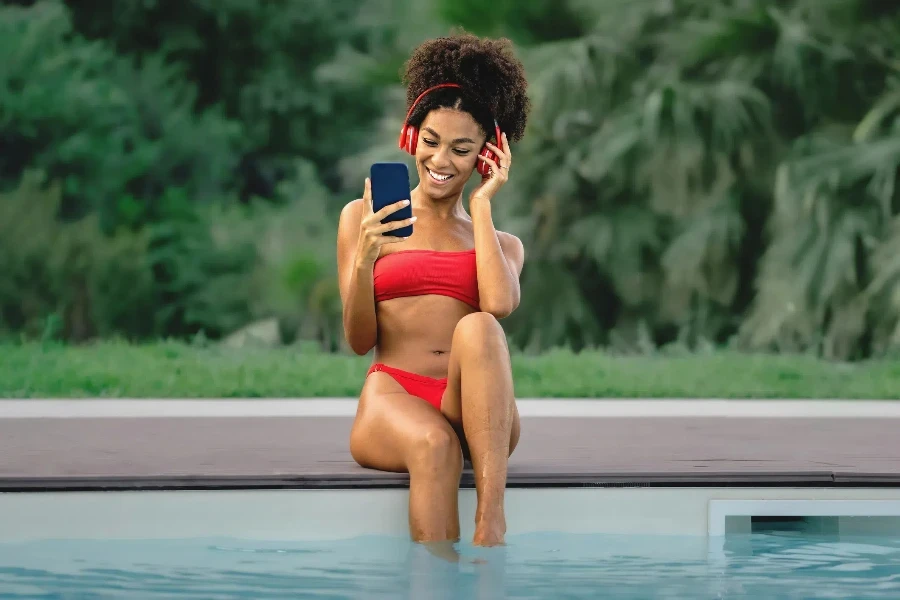
Water-resistant headphones are designed to withstand exposure to small amounts of moisture, such as sweat or light rain. They typically have a lower IP rating, such as IPX4 or IPX5, which means they can handle splashes of water from any direction but are not suitable for submersion.
- IPX4: Protected against water splashes from any direction.
- IPX5: Protected against low-pressure water jets from any direction.
Water-resistant headphones are ideal for running, cycling, or gym workouts where people might sweat or encounter light rain, but they are not suitable for swimming or any activity involving full immersion in water.
Waterproof headphones are designed to withstand full submersion in water without getting damaged. They have a higher IP rating, such as IPX7 or IPX8, indicating they can be submerged in water for extended periods of time. These headphones are designed for swimming, diving, or other water sports.
- IPX7: Can be submerged in water up to 1 meter deep for 30 minutes.
- IPX8: Can be submerged in water beyond 1 meter depth, with the exact conditions specified by the manufacturer.
Waterproof headphones are ideal for swimmers and other water sports enthusiasts who need reliable performance underwater. They are built to ensure that water does not enter the internal components, preserving sound quality and durability.
Best swimming headphones
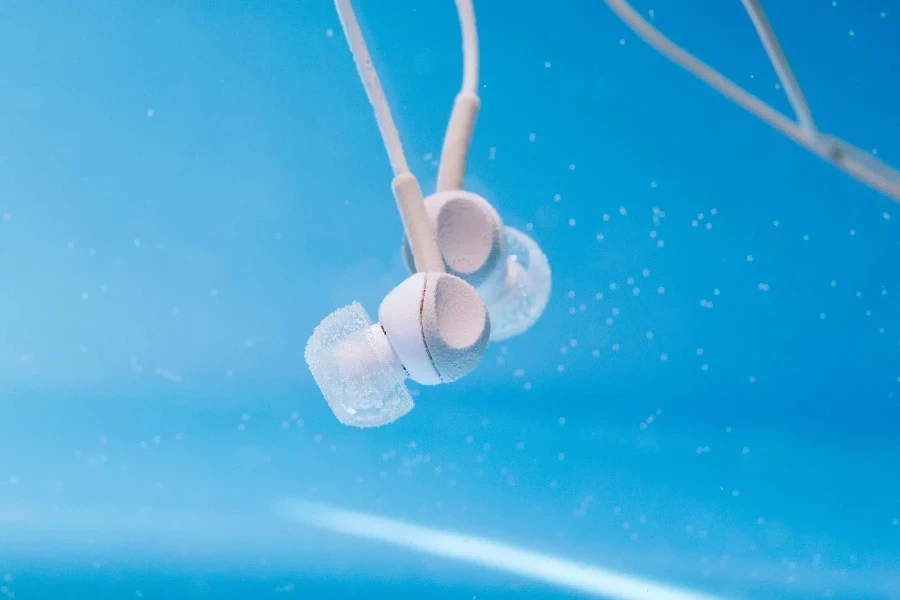
There are two main types of waterproof headphones. Knowing the difference between them is important when determining which are best for swimming. One connects to the phone via Bluetooth, while the other has internal storage and works more like an old-school MP3 player. Which is better?
Bluetooth doesn’t travel well underwater. To use these headphones effectively while swimming, one needs to remain relatively close to the device. If people don’t want to worry about staying connected to the phone or measuring the length of the pool to determine if the headphones will remain connected and effective, the ones with internal storage are likely best.
Here are the top picks for the best waterproof headphones for swimming:
1. JBL Reflect Aero: Best earbuds
- Waterproof rating: IP68 (fully dust-proof) and can withstand continuous immersion in water (up to 1.5 meters / 4.9 feet for 30 minutes)
- Built-in storage: No built-in storage
- Battery life: Up to 8 hours on a single charge, with an additional 16 hours from the charging case
- Sound quality: High-quality JBL sound with deep bass and clear highs
The JBL Reflect Aero stands out for its excellent sound quality and secure fit. Of course, as mentioned previously, Bluebooth isn’t the most effective for water use. For those looking for earbuds, these are designed to stay in place during intense swimming sessions, offering both comfort and performance.
2. Naenka Runner Diver: Best for storage
- Waterproof rating: IP68
- Built-in storage: 8GB internal storage
- Battery life: Up to 10 hours of playback
- Sound quality: Clear and balanced sound with good bass response
The Naenka Runner Diver is ideal for swimmers who prefer to store their music directly on their headphones. With 8GB of internal storage, one can leave the phone behind and enjoy swimming with ease.
According to Naenka, their Runner Diver2 Pro series is the best option for swimmers. They have even more storage (32GB), the best waterproofing, and are okay to use in saltwater.
The biggest downside with these headphones is that reviewers noted the sound quality was better when wearing the provided earplugs. It isn’t something every consumer is going to love.
3. Shokz OpenSwim: Best for salt water
- Waterproof rating: IP68
- Built-in storage: 4GB internal storage
- Battery life: Up to 8 hours of playback
- Sound quality: Bone conduction technology provides clear sound without the need for earbuds
The Shokz OpenSwim uses bone conduction technology, making it perfect for swimming in salt water. This innovative design ensures comfort and durability, even in harsher water conditions. The biggest downside with these headphones is they have less storage than their competitors.
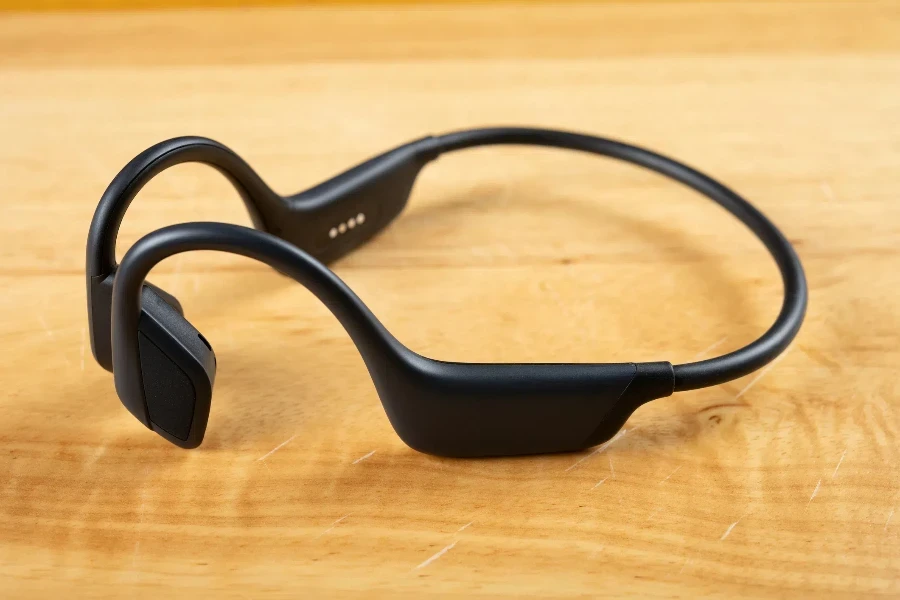
4. H2O Audio Tri Multi-Sport: Best for fitness enthusiasts
- Waterproof rating: IPX8
- Built-in storage: 8GB internal storage
- Battery life: Up to 10 hours of playback
- Sound quality: High-fidelity sound with deep bass and clear highs
The H2O Audio Tri Multi-Sport is tailored for fitness enthusiasts who engage in multiple sports, including swimming. With its robust waterproofing and ample storage, it’s a versatile option for various activities.
Tips for using headphones for swimming
- Pre-swim check: Before using the swimming headphones, ensure they are properly sealed and functioning. Test them in a small amount of water to ensure they are working as expected.
- Clean after use: Rinse the headphones with fresh water after each swim to remove chlorine or salt, which can cause damage over time.
- Proper storage: Store the headphones in a dry, cool place to prolong their life.
- Avoid extreme temperatures: Don’t expose the headphones to extreme temperatures, as this can affect their performance and lifespan.
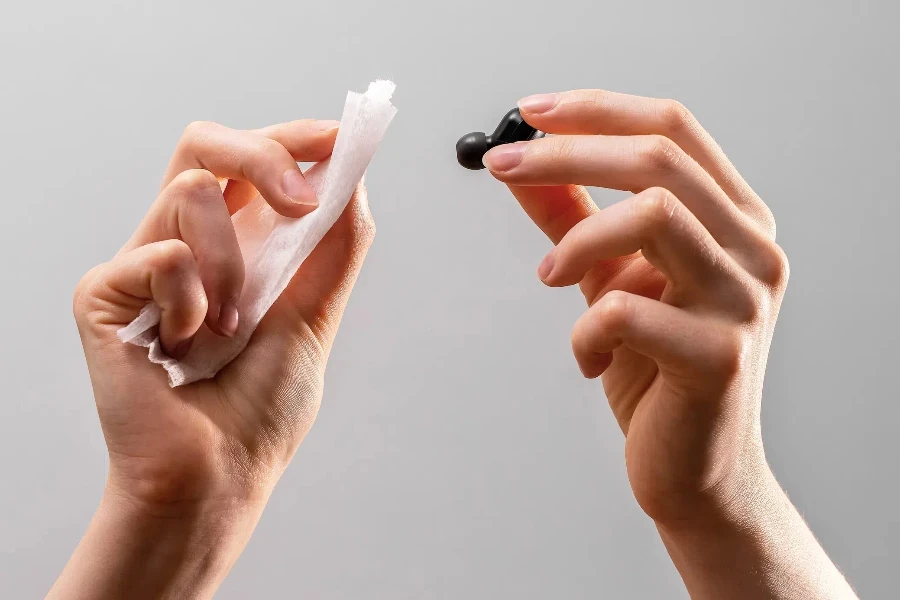
FAQs
Can I wear my AirPods Pro in the pool?
No, AirPods Pro are not designed to be waterproof. They are rated IPX4, which means they are resistant to sweat and splashes of water, but not suitable for submersion in water. Wearing AirPods Pro in the pool could damage them and void any warranty. For swimming, we should use headphones specifically designed to be waterproof.
What waterproof rating is necessary for swimming headphones?
For swimming headphones, a waterproof rating of IPX7 or higher is recommended. IPX7 means the headphones can be submerged in water up to 1 meter deep for 30 minutes. A rating of IPX8 indicates that the headphones can handle continuous immersion in water beyond 1 meter. Both ratings are suitable for swimming, but IPX8 offers better protection for prolonged or deeper submersion.

Are bone-conducting headphones better for swimming?
Bone-conducting headphones can be a good choice for swimming because they don’t require traditional earbuds. Instead, they use vibrations to transmit sound through the cheekbones directly to the inner ear. This design can be more comfortable for swimmers, but whether they are “better” depends on personal preference.
How do you wear bone conduction headphones for swimming?
Bone-conducting headphones are typically worn around the head like a headband, resting on the cheekbones just in front of our ears. Ensure that they are snug but not too tight. Since they don’t require anything in the ear canal, we must ensure they are securely positioned to prevent slipping during swimming.
Do Bluetooth headphones work while swimming?
Bluetooth headphones generally do not work well while swimming because Bluetooth signals cannot penetrate water effectively. Most Bluetooth headphones rely on a stable connection with a device, which is challenging to maintain underwater. For swimming, it’s generally better to use waterproof headphones with built-in storage.
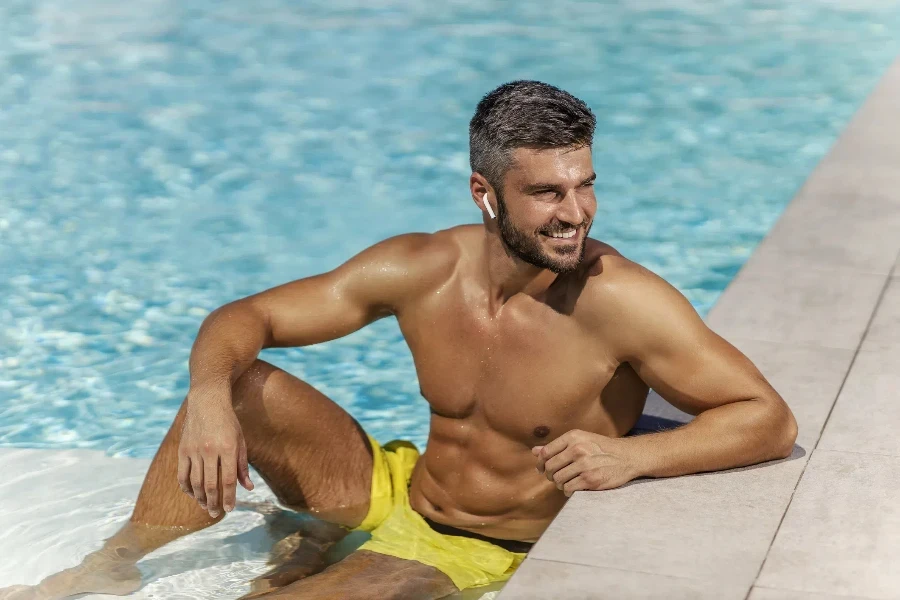
Final thoughts
Investing in a good pair of headphones can transform one’s swimming experience, making the workouts more enjoyable and engaging.
Offering products that cater to various requirements can help businesses attract a diverse customer base. Additionally, providing clear information about what makes a headphone suitable for swimming can guide consumers to make informed choices, ultimately leading to increased satisfaction and sales. Highlighting features such as durability, sound quality, and fit will make your offerings more appealing.
By staying updated with the latest advancements and focusing on customer needs, your business can effectively market the best headphones for swimming and thrive in this niche market.
